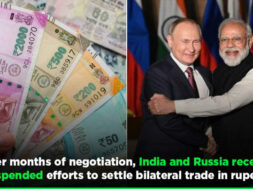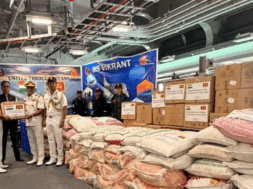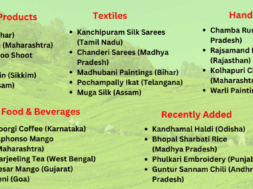
Roving Periscope: Russia is burdened with Indian rupees!
Virendra Pandit
New Delhi: Russia is in a quandary of what to do with the huge pile of over USD 147 billion worth of foreign assets, mainly Indian rupees, it has accumulated by selling discounted oil to India after the West and its allies imposed sanctions on Moscow in the wake of its invasion of Ukraine on February 24, 2022.
Last year, the Reserve Bank of India (RBI) came up with a trade settlement mechanism with Russia in Indian rupees. Recently, the two countries suspended efforts to settle bilateral trade with INR because of Moscow’s worries.
Their bilateral trade from April 2020 to March 2021 amounted to only USD 8.1 billion, including Indian exports to Russia worth USD 2.6 billion and Russian exports to India worth USD 5.48 billion. In FY22, Russia was India’s 25th largest trading partner.
However, the situation changed dramatically after the US and the European Union slapped sanctions on Russia, which is now India’s second-largest trade partner.
In FY23, India had the maximum trade deficit with China at USD 71.58 billion, followed by Russia at USD 34.79 billion. Of the USD 37.27 billion worth of imports from Russia, two-thirds of the value of goods was crude oil.
Every quarter, the trade imbalance between the two countries generates the equivalent of USD 2 billion to USD 3 billion worth of Indian rupees that Moscow cannot use. During 2022 alone, an estimated USD 147 billion in net foreign currency assets, mainly INRs, was built up.
To sort out this huge imbalance, the two nations are trying to find an alternative, one of which is to establish various payment mechanisms, including investments in India’s capital markets by Russian entities. However, since India has restrictions over capital flows by foreign investors, Russia cannot use the entire tranche.
The other option is to use currencies of a third country such as China’s yuan or UAE’s dirham, which also appears unlikely.
Even if India wanted to increase its oil imports, it can no longer do as Moscow has cut discounts that New Delhi enjoyed through most of FY23. These discounts plunged because of increased Chinese demand and a cut at the oil producers’ end, the media reported.
During FY23, by providing steep discounts, Russia, for the first time, became a significant oil supplier to Indian refiners. Between March 2022 and February 2023, India imported crude oil worth USD 27 billion, making Russia the second biggest oil supplier to India.
In March 2022, India imported just 68,600 barrels per day (bpd) of oil from Russia. In May 2023, New Delhi’s oil imports from Russia were more than the combined oil bought from Saudi Arabia, Iraq, UAE, and the US. India took 1.96 million bpd from Russia in May, 15 percent more than the previous high in April.
From a market share of less than 1 percent in India’s import basket before the start of the Russia-Ukraine conflict in February 2022, Moscow’s share of New Delhi’s imports rose to 1.96 million barrels per day in May, taking a 42 percent share.
The rise in Russian oil shares came at the cost of traditional suppliers in the Middle East. Shipments from Saudi Arabia slipped to 560,000 tons, the lowest since February 2021. Oil producers’ cartel OPEC’s share in India’s oil imports fell to an all-time low of 39 percent in May.
The Organization of the Petroleum Exporting Countries (OPEC), mainly in the Middle East and Africa, made up for as much as 90 percent of all crude oil India imported, which fell drastically after Russian oil became available at a discount.
OPEC supplied 1.8 million bpd out of 4.7 million bpd of oil India imported in May, down from 2.1 million bpd imported in April.
Iraq supplied 0.83 million barrels per day (bpd) of oil in May, while UAE shipped 203,000 bpd, and the US 138,000 bpd.
The average cost of Russian crude, including freight costs, landing on Indian shores in April was USD 68.21 a barrel – the lowest level since the Ukraine war. And the average cost of Saudi Arabian crude sent to India in April was USD 86.96 a barrel, while Iraqi oil was priced at USD 77.77 a barrel.
In December, the EU banned Russian seaborne oil and imposed a USD 60-per-barrel price cap, which prevents other countries from using EU shipping and insurance services, unless oil is sold below the cap.
Industry officials said Indian refiners are using the UAE’s dirham to pay for oil that is imported at a price lower than USD 60.














